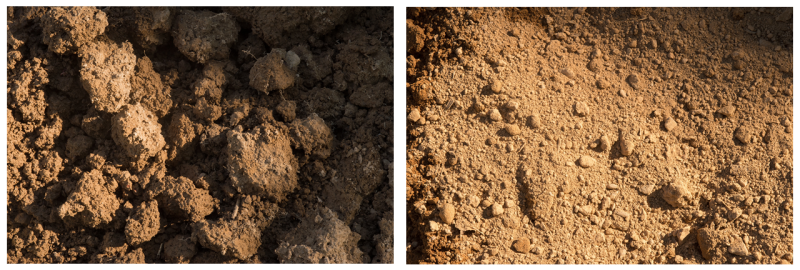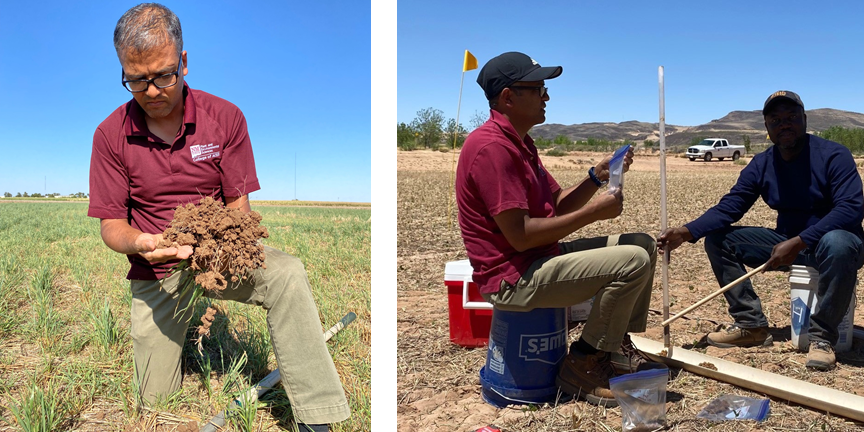Soil Health Research in Clovis, New Mexico
Soil is much more than just a mineral substrate for plant growth, especially when it comes to soil health. If we dig a hole in soil that has been undisturbed for a long time, we might notice how soil particles clump together and that there are airspaces between the clumps. We may also see decaying organic matter, some roots and perhaps a worm or two. The air spaces and root channels in this soil means it will be well-drained, while its organic matter content allows it to retain moisture. The Natural Resources Conservation Service (NRCS) describes soil health as “the continued capacity of soil to function as a vital living ecosystem that sustains plants, animals, and humans.” For the farmer, healthy soil regulates water, sustains plant and animal life, effectively filters and buffers pollutants, and promotes nutrient cycling. An unhealthy soil is characterized by poor physical structure and depleted organic matter. It will be more susceptible to erosion by surface flooding or wind shear, or conversely, it may be water-logged. Low microbial activity and sub-optimal pH levels in an unhealthy soil also impedes nutrient cycling and diminishes its ability to buffer pollutants.

Healthy moist soil (left) from a farm that uses no-till and cover crops. showing good structure, clumping, and evidence of roots. One hour before the picture was taken, this soil received two inches of rain and can hold most of it at a level that plant root systems can use the water. Passageways created by desirable worms allow excess water to drain away. Root systems provide organic matter that provides some of the structure in the soil. Dry compacted soil (right) from a farm that does not use cover crops and regularly tills the soil with machinery. This unhealthy soil shows no structure and little biological activity. Like the healthy soil, this soil received two inches of rain but water simply ran through it, rather than being held for use by a plant root system Photos: Lance Cheung, NRCS.
Interest in soil health practices is growing in the Southwest, but adoption rates remain low, partly due to limited information on how specific practices might impact water availability or soil nutrients in arid or semi-arid soils (Ghimire et al., 2023; Acharya et al., 2024). Another challenge is that arid land soils naturally have very organic matter content (less than 2%), and the lack of water inhibits the biological processes that help build organic matter (Ghimire et al., 2023).
Rajan Ghimire and his team at New Mexico State University’s Agricultural Science Center at Clovis are working to answer some of the questions that face soil health practitioners in arid and semi-arid lands. Growing cover crops in the off-season is one of the strategies that a farmer can use to build soil health. Cover crops, as the name suggests, can be used to cover the soil surface to prevent soil loss through erosion and to suppress weeds. Below the soil surface, cover crop roots improve soil structure which in turn helps water infiltration and aeration. Cover crops also promote nutrient cycling in the soil profile by transporting nutrients from deeper layers and releasing them as they die and decompose. Through decomposition, cover crops contribute to soil organic content and provide an energy source for soil microbial communities (Acharya et al., 2024). Cover crops have also been shown to facilitate carbon sequestration in the soil and because of this, cover cropping features as a Conservation Practice on the NRCS list of Climate-Smart Agriculture and Forestry Mitigation Activities (NRCS, 2024).

Dr. Ghimire and Postdoctoral Scholar collecting soil samples. Photos courtesy of Dr. Ghimire.